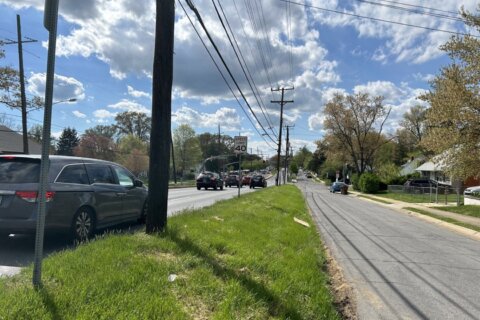WASHINGTON — At the end of this month, a woman with 38 years of experience identifying Montgomery County criminals’ fingerprints will retire. Mary Ann Horton is reflecting on her career that has brought hundreds to justice.
Peering through a magnifying glass, Mary Ann Horton’s eyes follow her pencil point around the ridges of a latent finger print. But it’s the hardest of them all, the unremarkable or unclear palm prints, that spark her interest.
“To me, it feels like a puzzle … when I look at a print to be able to try to figure out what’s going on,” she said.
Approaching nearly four decades in forensic science, Horton remembers a time when she had no clue what she wanted to do, and was recruited in high school by the FBI. She was placed in the “ident” division, as she calls it, and started training in latent finger print identification. Shortly after, she came to work for Prince George’s and Montgomery counties.
“I’m going to miss feeling like I’ve had a hand in coming to the truth of investigations; that I’ve been a part of that. There is definitely something satisfying in that,” Horton said.
And she has played a large part in hundreds of cases, including the conviction of Hadden Clark. Horton’s work led to his conviction in the 1992 homicide case, when she was able to match a print on a pillowcase in 23-year-old victim Laura Houghteling’s bedroom to Clark. He later pleaded guilty to killing the woman in her Bethesda home.
“It’s the only time I’ve ever had a fingerprint on fabric. It’s not a normal surface. It was left behind in blood and because it was a fine weave, there was enough detail to be able to make a comparison and be able to make an identification,” she recalled.
Horton was also involved in breaking open the homicide cases of Monsignor Thomas Wells, who was killed in 2000 in the rectory of his Germantown church and the 1993 triple homicide of a disabled Silver Spring boy, Trevor Horn along with his mother and nurse.
Colleague Lanette Turner has worked alongside Horton for six years and recognizes her phenomenal talent, especially when it comes to placing a small partial print likely off a suspect’s palm.
“You look at the fragmentary pieces that we get from crime scenes and they could be as small as a nickel or smaller. But she can look at it and say, ‘Well it looks like it came from the middle of the palm or your finger area’ … and she’ll say, ‘Going in the right direction.’ And it’s like, how did you even know it was there?” Turner asked.
Even in a digital age, it’s the human eye that helps distinguish prints, Horton said.
“Even now the computer doesn’t make IDs on latent prints because they are partial, or they’re distorted, or they’re generally not as clear as what you’d get on a fingerprint card. You need that human element to make that determination,” Horton said.
Horton plans to close this chapter of her life at the end of January, but has mixed feelings about leaving her work.
“I’ve spent more time here than I’ve spent in my own house! It’s been a great career,” she said.








